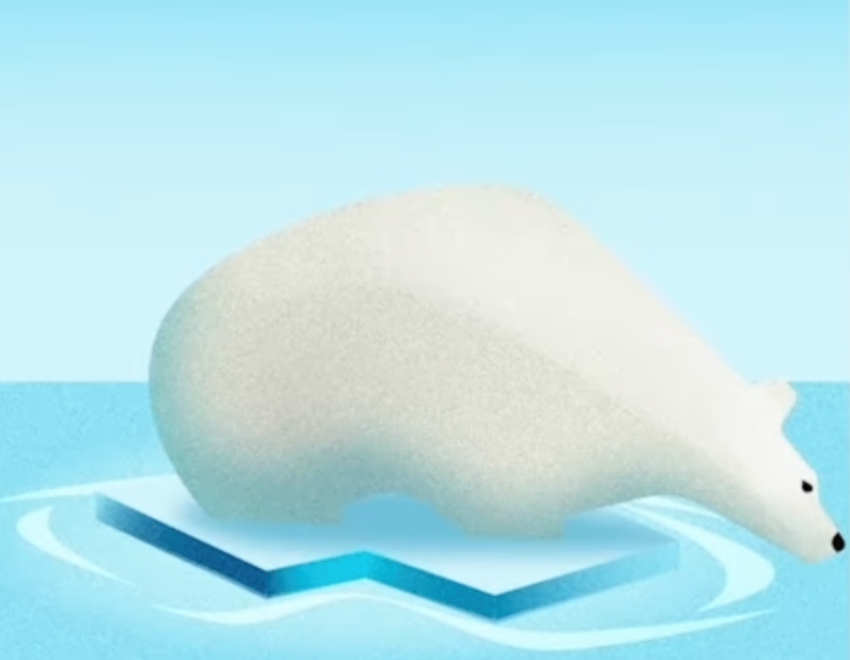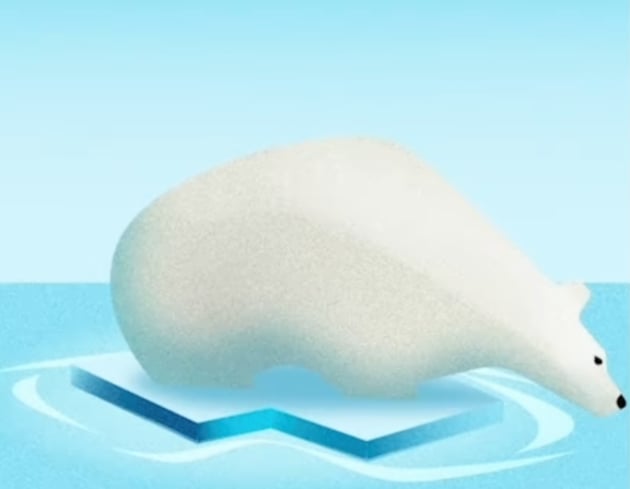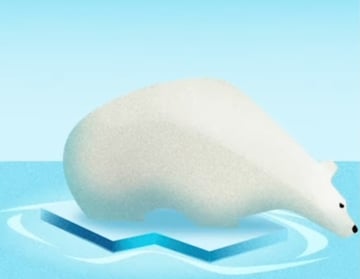
Let’s say you’ve created a couple of shapes in your design. They’re all separate but are part of the same structure. In that scenario, modifying each shape individually to produce a more complex design would be a nightmare.
Compounding the shapes, on the other hand, will work wonders. You’re basically making one shape out of all of them, meaning you can edit them as one in a non-destructive way. It allows you to merge them, subtract them, intersect them, and more. By compounding shapes, you’ll be able to design quickly and efficiently. Needless to say, it’s one of those Affinity Designer basics you must have in your arsenal!
How to use compound shapes in Affinity Designer
Let’s get to the good part! As you may remember from previous tutorials on Affinity Designer tips and tricks, we were working on a design depicting a bear atop an iceberg.
In this case, we want to modify the shape of the iceberg upon which the bear is standing. Here’s how to do it using Affinity Designer compound shapes:
Frequently asked questions about Affinity Designer compound shapes
Let’s dig into a couple of questions you may have about compound shapes in Affinity Designer.
Does the order of the shapes matter?
Yes! This is something important to note. The arrangement of the shape layers does matter when it comes to editing a compound shape. This means that if you have a smaller shape under a bigger one, you won’t be able to edit it as the bigger shape is covering it. What you can do is rearrange the layers or expand the bottom shape to bend it to your wishes.
What are the options for compound shapes?
When you expand the compound shape, you’ll see a button to the left of the first shape. Clicking it will unveil the main options you have for the compound shape: add, subtract, intersect, and xor. This is what each of these means:
- Add allows you to merge all shapes into one that has a single outline.
- Subtract helps you cut out the areas of one shape in relation to another shape.
- Intersect takes the overlapping areas of the shapes and creates a new shape from those common spaces.
- Xor creates a new shape from non-overlapping parts of the shapes.
Keep in mind that you’ll only be able to access these options through the first shape in the compound.
Can I use Affinity Designer compound shapes with other tools?
Yes! If you’re looking to edit your design and want to do it as your shapes are compounded, you absolutely can. For example, if you want to modify the contour effect, you can use the Contour Tool on your compound shape. No sweat!
Check out our final result!
Here’s the end result of using Affinity Designer compound shapes to improve the design of the iceberg in our artwork. As you can see, we’ve created some ripple effects on the water to add more visual interest and dimension. Cool, isn’t it?
Now you can use this, among other Affinity Designer basics, to produce a masterpiece!



Continue reading these Affinity Designer tutorials to learn new skills and see how the bear design will turn out!
Learn more about Affinity Designer
Eager to learn more about Affinity Designer? Here are other Envato Tuts+ tutorials for different skill levels:
